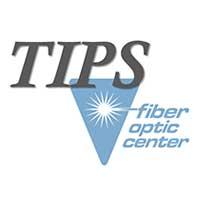
Performance of fiber optic cables can be determined by if the connector end faces are damaged or dirty. Just how perfect and clean is necessary for proper operation, you wonder?
Most assembly houses quickly get a feeling for where they want to operate but subjective defect and dirt appraisals can vary between operators and may tend to relax in times of high demand.
This is where automated end-face inspection microscopes come in. The software analyzes the digital image for scratches, defects and dirt. The analysis is referenced to IEC standards and an objective report, independent of operator, time of day, or production pressure is produced and complete with images.
Sounds perfect, but are we being seduced by this digital wizardry? Is it really more accurate and consistent than a bunch of experienced operators? Also, will two instruments give the same result on any one end-face? This is of particular importance if your customer is also using an automated microscope for incoming inspection. Is it possible they could fail a connector that you shipped as good?
So, just how reproducible are these tools? FiberQA, manufacturer of the FastMT inspection scope, along with a discerning military contractor and a respected fiber optic cable manufacturer (details in link) set up a study to find out.
Our Tip is providing a link to this study: Measuring Fiber End Face Inspection Microscope Reproducibility using Chrome on Glass Artifacts
A well-defined test target was made using an etched chrome-on-glass technique. Five different targets, each emulating 33 fibers were fixed to MT ferrules, each “Fiber” having 16 defects, making, in total, 2640 unique particles.
The targets were measured 32 times for a total of 84,480 measurements. This set of measurement was made with three different FastMT instruments to ascertain the degree of consistency between them.
All the instruments showed a consistent defect size with a bias error for all measurement was within +- 0.1 um.
A full description of the experiment and the statistical methods used for crunching all this data can be found HERE.
Additional resources from the FOC team include:
- Category Resource:
- View the Glossary, Acronyms, Military Specifications for Connectors
- Q&A Resource: email technical questions to AskFOC@focenter.com
Have questions about this FOC Tip?
Contact FOC with questions at: (800) 473-4237 / 508-992-6464 or email: FiberOpticCenter@focenter.com and we will respond ASAP.


